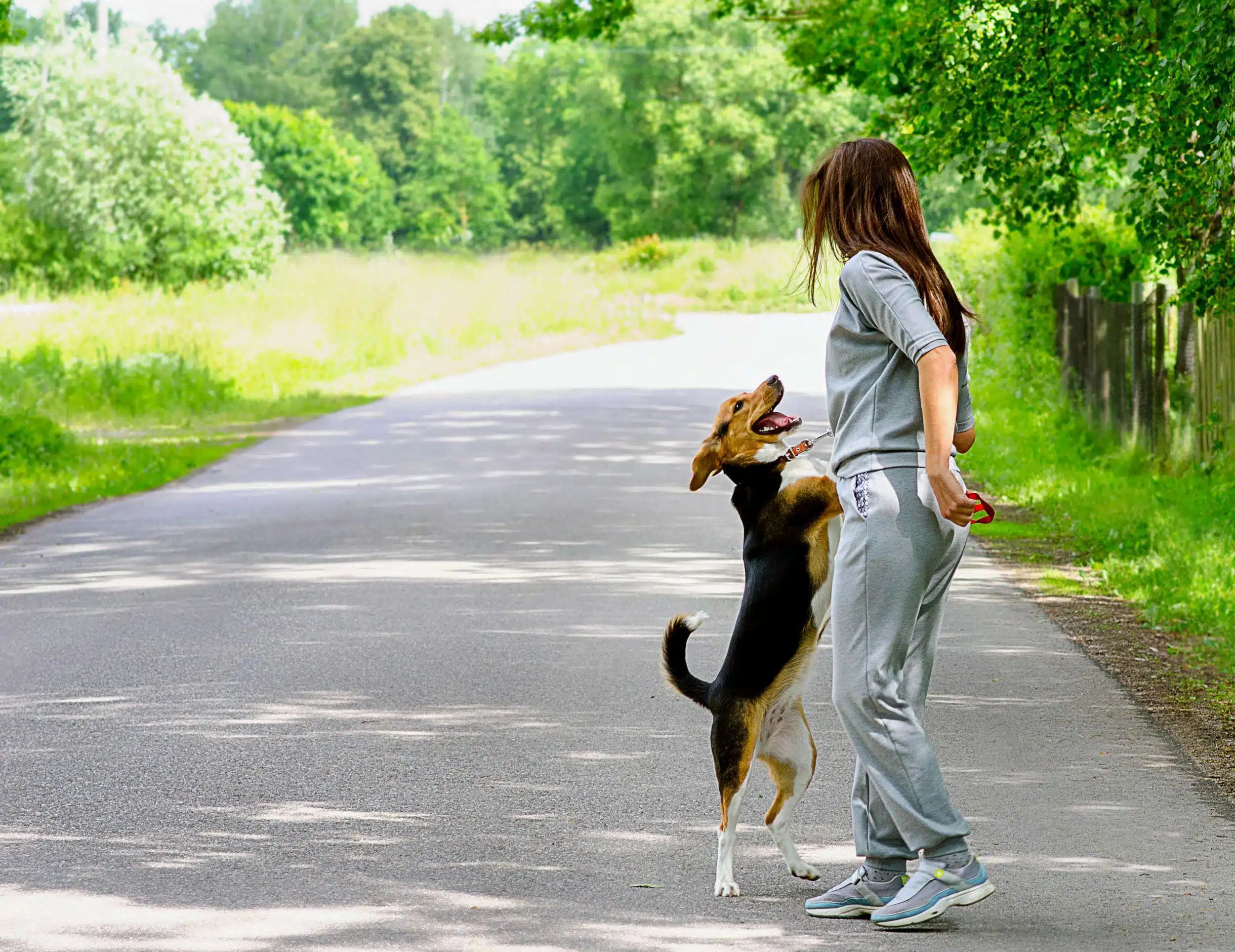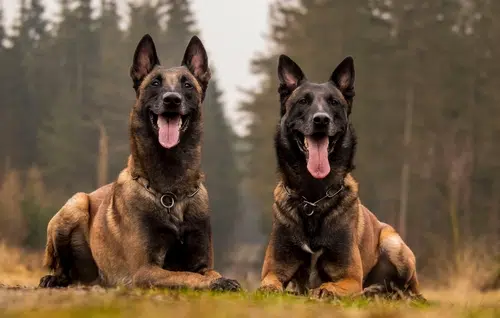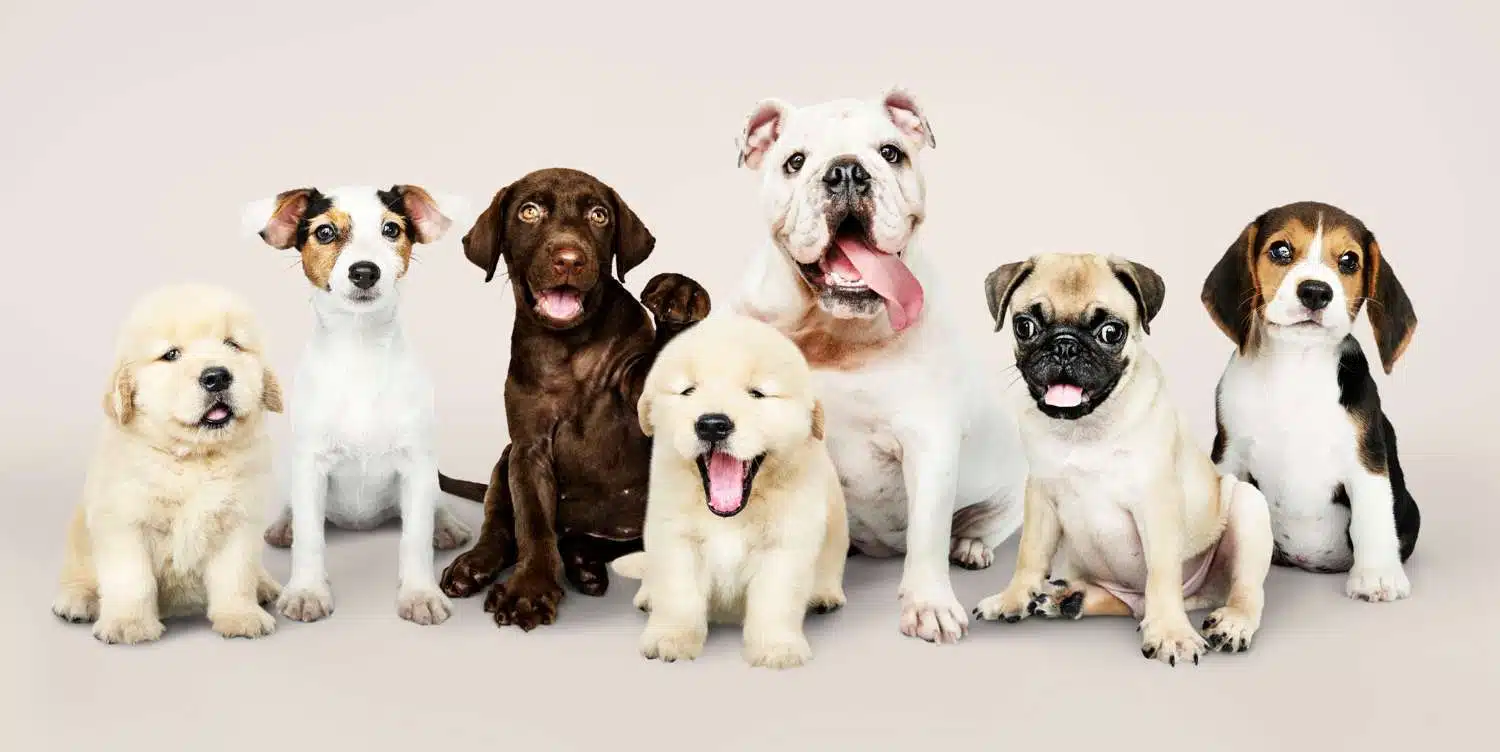Understanding dog displacement behavior is crucial for dog owners and enthusiasts alike. These subtle cues our canine companions exhibit offer insights into their emotional states, allowing us to comprehend their needs and experiences better. By recognizing and interpreting these behaviors, we can enhance our bond with dogs, promote their well-being, and foster a harmonious relationship built on mutual understanding and empathy.
What is Dog Displacement Behavior?
Dog displacement behavior refers to our furry friends’ actions when experiencing internal conflict or stress.
Picture this: you’re at a crowded party, and suddenly you feel overwhelmed by all the noise and commotion. You might start fidgeting, biting your nails, or checking your phone repeatedly, right? Well, dogs have their versions of these nervous ticks. They might start yawning when they’re feeling anxious, or licking their lips when they’re unsure about a situation. Sometimes they’ll even scratch themselves or shake off as if trying to physically shake off their worries. It’s their way of telling us, “Hey, I’m not feeling so great about this.” Understanding these behaviors is like deciphering a secret language—they give us a glimpse into our furry friends’ inner worlds and help us provide the comfort and support they need.
Types of Dog Displacement Behaviors
Types of dog displacement behaviors encompass a range of subtle cues that dogs exhibit when they’re feeling stressed, anxious, or conflicted. These behaviors serve as coping mechanisms or ways for dogs to communicate their discomfort in various situations. Common types of displacement behaviors include:
Yawning: While dogs do yawn when they’re tired, frequent yawning in non-sleepy situations can signal stress or anxiety. It’s a way for dogs to release tension and communicate their unease.
Lip licking: Dogs may lick their lips when they’re feeling nervous or uncertain. This behavior is often seen in situations where the dog perceives a potential threat or feels uncomfortable.
Scratching: Excessive scratching, even when there’s no itch, can indicate stress in dogs. It’s a self-soothing behavior that helps them redirect their focus and alleviate tension.
Shaking off: Similar to how a wet dog shakes off water, dogs may shake off their bodies as a way to physically release stress. It’s a reflexive action that helps them cope with their emotions.
Sniffing the ground: Dogs may engage in excessive sniffing of the ground when they’re feeling stressed or anxious. This behavior allows them to divert their attention away from the source of stress and focus on something else.
Avoidance: Some dogs may try to avoid direct eye contact or physical contact when they’re feeling stressed. They may turn their head away, move away from people or other animals, or try to hide.
Excessive vocalization: While barking and whining are natural ways for dogs to communicate, excessive vocalization in certain situations can be a sign of stress or anxiety. Dogs may bark or whine more than usual when they’re feeling overwhelmed.
Pacing: Dogs may pace back and forth when they’re feeling stressed or anxious. This behavior helps them release pent-up energy and cope with their emotions.
These displacement behaviors are important signals that dog owners should pay attention to, as they can indicate when a dog is feeling uncomfortable or stressed. Understanding these behaviors allows owners to provide support and create a more positive and stress-free environment for their furry friends.
Also Read: Exploring Best Dog Crates for Anxiety
Recognizing Dog Displacement Behaviors
Recognizing dog displacement behaviors is crucial for understanding your furry friend’s emotional state and well-being. By observing their subtle cues, you can identify when they might be feeling stressed, anxious, or conflicted.
Here are some tips for recognizing displacement behaviors in dogs:
- Watch for signs of stress like tense muscles, lowered ears, wide eyes, and a tucked tail in your dog’s body language.
- Rapid or shallow breathing could signal stress, especially in uncomfortable situations.
- Dogs may yawn, lick their lips, scratch, or shake off when feeling stressed as coping mechanisms.
- Notice changes in behavior like increased vocalization, pacing, or avoidance, indicating stress or anxiety.
- Consider the environment and recent stressors when interpreting your dog’s behavior.
- Identify triggers like loud noises or changes in routine that cause stress.
- Trust your intuition as a dog owner to recognize signs of stress and take action to help your dog feel comfortable.
By recognizing and understanding your dog’s displacement behaviors, you can better support them and create a safe and nurturing environment where they can thrive. If you’re unsure about your dog’s behavior or how to help them, consider consulting with a veterinarian or professional dog trainer for guidance.
Also Read: Essential Tips and Techniques for Training Your Dog
Causes of Dog Behaviors
The causes of dog displacement behaviors are varied and can stem from a range of factors that contribute to their stress, anxiety, or discomfort. Understanding these causes is crucial for providing appropriate support and addressing your dog’s needs effectively. Some common causes include:
- Environmental stressors
- Social stressors
- Health issues
- Lack of socialization or training
- Changes in routine or schedule
Understanding the underlying causes of displacement behaviors in dogs is essential for addressing the root of the problem and providing appropriate support and intervention. By identifying and addressing the factors contributing to your dog’s stress or anxiety, you can help them feel more comfortable and confident in their environment.
How to Deal with This Behaviors in Dogs
Once we understand what’s causing our furry friends distress, we can take proactive steps to create a safe and comforting environment for them.
Establishing a routine provides dogs with a sense of security and predictability, helping to reduce their stress levels. Dogs thrive on mental and physical activity, so providing them with puzzle toys, interactive games, and plenty of exercise keeps their minds sharp and their bodies healthy.
When our dogs exhibit calm and relaxed behavior, rewarding them with treats, praise, or their favorite toys reinforces those desirable actions. Even you can seek assistance from a professional dog trainer or behaviorist who can provide you with the guidance and support you need to address your dog’s specific needs.
Final Words
Understanding and addressing dog displacement behaviors is essential for fostering a harmonious relationship with our furry companions. Recognizing subtle cues helps understand underlying stress in dogs, ensuring they receive the necessary support and thrive. We can establish routines, offer stimulation, use positive reinforcement, or seek professional help to help dogs feel confident. Through patience, empathy, and unconditional love, we can build a stronger bond with our dogs and create a happy, stress-free life together.
Interesting Reads:
Expressive Eyes: Exploring the World of Dog Breeds with Eyebrow Markings











Get involved!
Comments